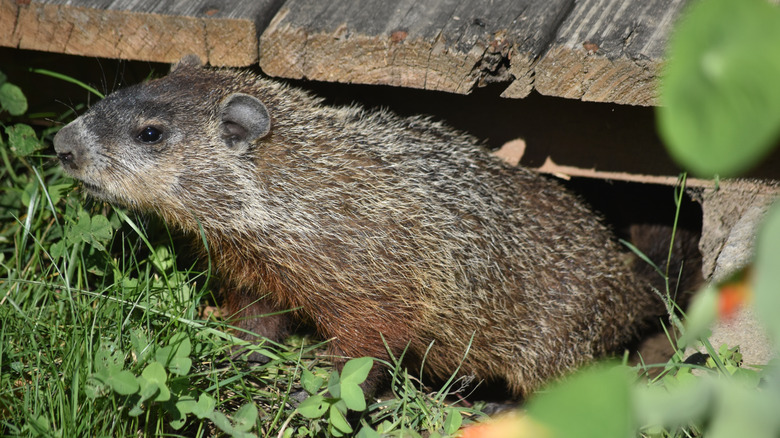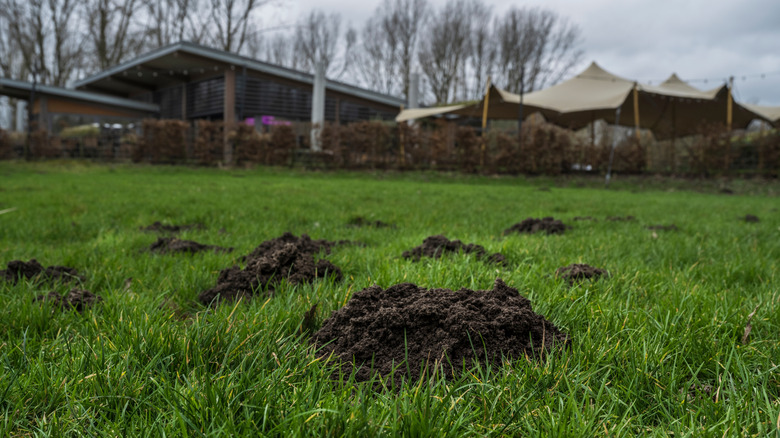Identifying Garden Pests: The Difference Between Groundhogs And Woodchucks
How much wood could a woodchuck chuck if a woodchuck could chuck wood? There's actually a much better question for gardeners to be asking: Namely, what's the difference between woodchucks and groundhogs? In short, nothing. These are different names for the same species of animal (Marmota monax) — and whatever you call them, they're a common garden pest you'll want to banish from your yard.
The confusion stems primarily from regional differences. While most Americans call this furry rodent a "groundhog" (i.e., Groundhog Day), English speakers across the pond refer to it as a "woodchuck." (Another fun fact: Groundhogs have some other fun nicknames, too, such as "whistle pig" and "land beaver.") This commonly spotted critter is one of the largest of the squirrel family (Sciuridae). Whether they're groundhogs or woodchucks to you, it's worth learning how to identify the damage they can cause and ways to keep them out of your garden.
How to identify groundhog damage & deal with it
As cute as they look, groundhogs (which, again, are the same animal as woodchucks) aren't great to have in your yard. These rodents are mostly herbivores and like to munch on plants and tiny insects throughout the warmer months. Though you're unlikely to spot groundhog damage while they're in hibernation mode in the winter, that can change once the weather warms up. They're burrowing critters, so holes in your yard that initially appear in late summer or early fall are one indication that you may have a groundhog problem. Damage to legumes and other edible plants in your garden is another sign. Groundhogs love to nibble on these tasty crops, particularly when they're bulking up for winter.
If you have groundhogs in your area, there's no way to completely ensure that they'll stay off your property. However, there are some steps you can take to make your yard less appealing to them. Keeping it tidy and well-manicured is vital — failing to do so is a sneaky mistake that can attract pests to your yard. That's because overgrown grass and un-raked leaves give groundhogs more cover and food to munch on.
Do you have a dog or a cat at home? Spread some of their hair outside, or let them do their business near the groundhog holes in your garden. Their scent may deter groundhogs. You can do the same with crushed spices like garlic or cayenne pepper. Installing a scarecrow can also scare them off. And of course, you can always fence off the impacted area, which will block groundhogs from accessing it, discourage them from burrowing, and help prevent future damage.

